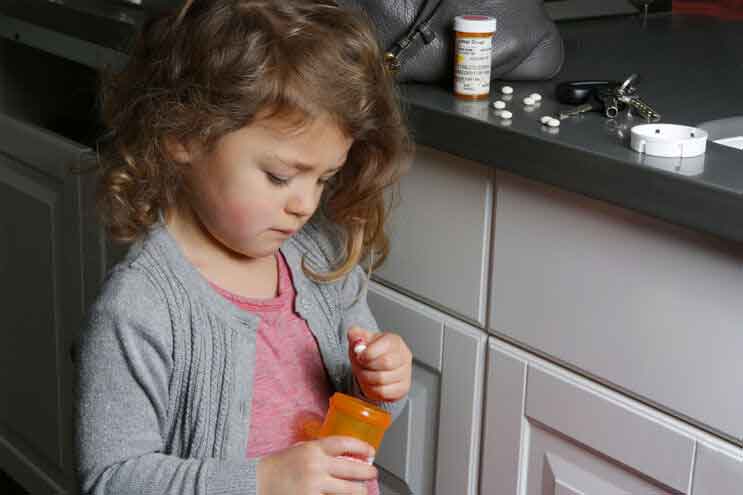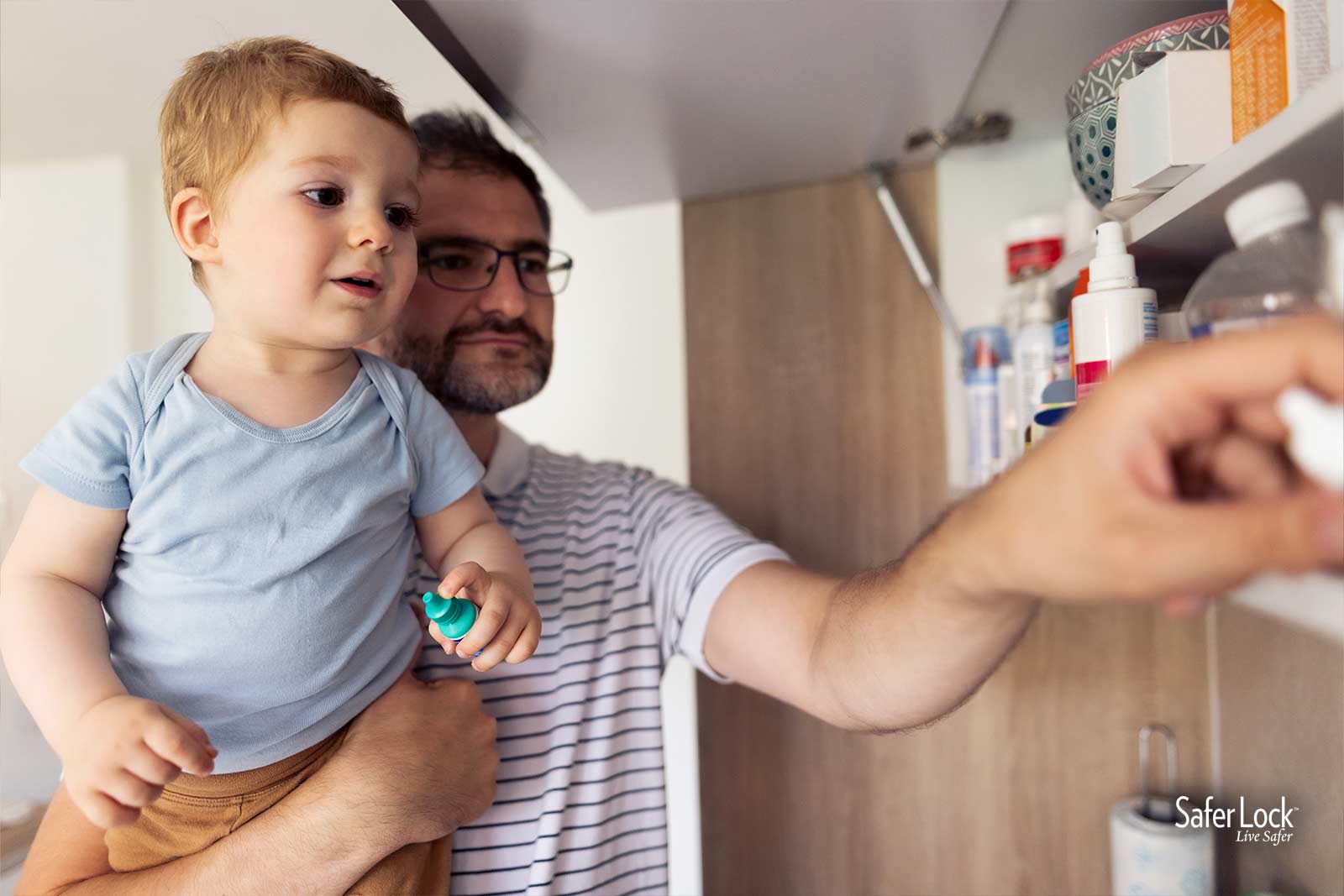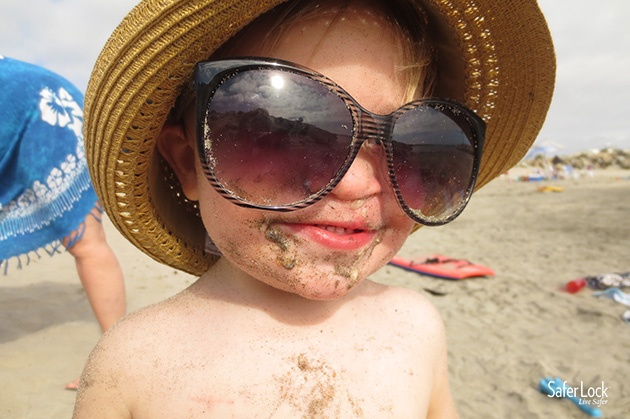A phone call is made to a Poison Control center in the United States once every 15 seconds. It’s a call that no parent wants to make and many go to great lengths to avoid. Yet accidental childhood poisoning is more common than you think.
In 1962, President John F Kennedy proclaimed the third week of March to be National Poison Prevention Week. In honor of Poison Prevention Week, here are some facts that you need to know about poisonings, and tips on keeping your kids and family safe at home.
Poisoning is the Leading Cause of Injury Death in the U.S.
Poison control centers received 2.1 million phone calls in 2020. That’s a call to a poison control center approximately every 15 seconds.
The youngest members of the household are at the greatest risk for poisoning inside the home. Young children (under six) account for almost half of all poison control calls.
The National Center of Health Statistics has stated that poisoning is the leading cause of injury death in the U.S. Drugs, both prescription and illicit, cause the vast majority of poisoning deaths.
Drugs and Medications are the #1 Cause of Poisonings
Opioid overdoses have quadrupled in the U.S. since 1999. Pain relievers continue to be the #1 substance involved in poisonings.
In 2021, fatalities involving pharmaceutical substances increased by 28.5% over the year before. This includes deaths from both illicit drugs such as heroin, methamphetamines, and fentanyl, as well as prescription medications such as acetaminophen, hydrocodone, oxycodone, benzodiazepines, antidepressants, and cardiovascular medications.
According to the Centers for Disease Control (CDC), nearly half of all Americans have used a prescription medication at least once in the past 30 days. With so many prescriptions readily available in homes across America, it should come as no surprise that almost ¾ of a million people experience drug-related poisonings each year.
Top Poison Risks Inside Your Home
Any poison is a problem, but here are the ‘fatal five’ you should pay extra close attention to since they are the leading causes of household poisonings.
According to the 2018 National Poison Data System Annual report, the top 5 causes of poisonings include:
- Prescription pain relievers
- Household cleaning substances
- Cosmetics/ personal care products
- Sedatives including hypnotics and antipsychotics
- Antidepressants
How Can You Help Prevent Child Poisoning?
The American Association of Poison Control Centers (AAPCC) recommends the following to prevent poisoning in your home:
- Be prepared for an emergency. Keep the national, free Poison Helpline number at your fingertips by saving the number in your mobile phone: 1-800-222-1222
- Practice safe storage habits. Always store medicines and hazardous substances up, away, and out of sight of children.
- Read and follow all labels and directions. Review medicine and product labels before you use them, especially before giving medicine to children.
- Detect invisible threats. Have a working carbon monoxide detector in your home
Medication Storage Saves Lives
A 2018 study published in the medical journal Pediatrics discovered a rapid increase in the rate of opioid-related pediatric hospitalizations between 2004 and 2015.
A 2018 study published in the medical journal Pediatrics discovered a rapid increase in the rate of opioid-related pediatric hospitalizations between 2004 and 2015.
The study stated that poisonings from prescription medications continue to be a major cause of morbidity among children. The study authors demonstrate a significant and steady increase in the diagnosis of opioid ingestion and poisoning across all age groups in US children’s hospitals from 2004 to 2015.
“These kids are really the secondary victims of this adult opioid epidemic,” said Dr. Jason Kane, the lead author and an associate pediatrics professor at the University of Chicago and Comer Children’s Hospital. He said the results emphasize how crucial it is to store medications and other drugs locked, hidden and out of children’s reach.
But how do you ensure your prescription and over-the-counter meds are secure?
If you have one risky prescription in your home, consider securing it with a combination locking cap like the Safer Lock. This patented, 4-digit combination locking cap fits right on top of most prescription bottles and prevents unauthorized access.
Children can often easily master the challenge of the cracking open the child-resistant caps that come standard on most prescription bottles, as demonstrated in this terrifying video showing toddlers easily opening bottles of painkillers and over-the-counter medications.
A combination locking cap can be the strongest line of defense between a curious young child and a poisoning incident.
If you have multiple prescriptions or a mix of over-the-counter and prescription meds, you may want to consider a locking medicine box to store all of your medications in one secure spot.
And, even after they’re securely locked, the best place to keep medications is out of reach and out of sight of young children.
National Poison Prevention Week is held the third week of March each year, but every week offers another chance to properly secure medications and help protect our children from poisoning in the home. #NPPW23
This post was updated in March 2023 to include up-to-date statistics and relevant data.



